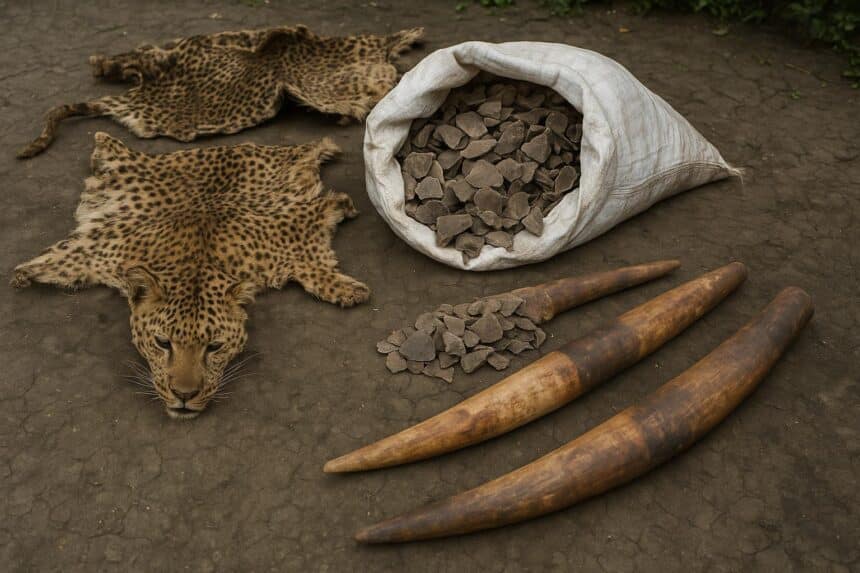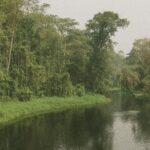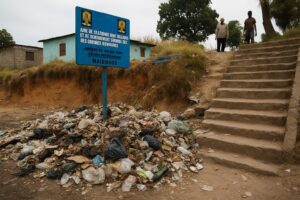Quiet streets, loud seizures
An ordinary October week turned dramatic in two northern Congo towns as courts opened back-to-back hearings against alleged wildlife traffickers. Reporters from Les Dépêches de Brazzaville and public radio noted heightened security outside both tribunals as conservation officers mingled with curious residents.
- Quiet streets, loud seizures
- Owando hearing: hidden ivory unveiled
- Timeline of the Owando case
- Impfondo hearing: claws in the courtroom
- Cross-river network suspected
- How joint patrols trapped the suspects
- Legal stakes: up to five years
- Defence seeks leniency
- Why elephants still vanish
- Panthers and pangolins under pressure
- Community voices seeing a turning point
- Economic tensions remain
- Government’s conservation push
- PALF’s growing footprint
- Next steps in the courtroom
- Regional ripple effect
- Stakes for biodiversity and youth
- Eyes on the verdicts
Owando hearing: hidden ivory unveiled
In Owando, a 38-year-old man stood before the bench on 15 October 2025. Investigators say he kept three raw ivory tips—equal to two baby elephants—wrapped in cloth under his bed since bringing them from Etoumbi in late 2024. He allegedly scouted buyers through discreet bar-room conversations.
Timeline of the Owando case
Gendarmerie archives indicate the suspect crossed three checkpoints by moto on 29 November 2024, slipping past because the ivory was cut short enough to resemble carved ornaments. A routine neighborhood patrol, boosted by the PALF mobile unit, eventually followed a tip and discovered the cache.
Impfondo hearing: claws in the courtroom
One day later, on 16 October, the wooden benches of the Impfondo tribunal filled early. A 42-year-old market vendor faced charges linked to two panther hides, eighty-four giant pangolin scales and twelve matching claws found in her woven rice sack during a river-port inspection on 25 August 2025.
Cross-river network suspected
Customs reports suggest the products had travelled down the Oubangui from a border village near the Central African Republic. Conservation NGO sources say similar patterns were seen in seizures reported by the Wildlife Conservation Society last year, hinting at a loose but persistent riverine supply chain.
How joint patrols trapped the suspects
Both arrests were carried out by mixed teams of National Gendarmerie officers and Forestry agents, with technical support from the Wild Fauna Law Enforcement Support Project, better known as PALF. Captain Rodrigue Niangui praised the collaboration, saying it “shows traffickers that our agencies now speak with one voice”.
Legal stakes: up to five years
Under Law 37-2008 on wildlife and protected areas, trade or even possession of parts from fully protected species can draw up to five years in prison and fines of five million CFA francs. Prosecutors in both towns requested the maximum, arguing deterrence outweighs mitigating factors.
Defence seeks leniency
Counsel for the Owando defendant argued his client acted from “ignorance and need”, insisting he inherited the ivory after a family hunt decades earlier. In Impfondo, the defence emphasized that the vendor is a single mother of three who “never crossed the forest”, portraying her as a courier more than an organizer.
Why elephants still vanish
Elephant numbers in the Congo Basin have fallen nearly two-thirds since the early 2000s according to the International Union for Conservation of Nature. Experts link the decline to ivory demand in Asian craft markets and to rising mining camps that open roads into previously intact forest.
Panthers and pangolins under pressure
The African leopard, locally called panther, remains officially common yet unstudied in northern Congo. Conservationists worry indiscriminate skin trade could mimic the steep drop seen elsewhere. Pangolins are even more at risk; TRAFFIC monitors rank the giant species among the most trafficked mammals on earth for traditional medicine use.
Community voices seeing a turning point
Outside the Owando court, resident Clarisse Okandzé welcomed the trial, saying it “protects what makes our forests special.” Radio interviews in Impfondo captured similar feelings, with boatman Jules Mabiala noting tougher checks have already reduced suspicious cargo on the Oubangui docks.
Economic tensions remain
Yet market watchers warn that rural poverty fuels the illegal trade. A kilo of pangolin scales can fetch up to 120 000 CFA on the clandestine border routes, more than double a farmer’s monthly earnings. Economists argue that alternative livelihoods must accompany law enforcement to ensure lasting results.
Government’s conservation push
Since 2022, the Ministry of Forest Economy has increased patrol budgets and rolled out awareness caravans in all twelve departments. Minister Rosalie Matondo recently stated that “protecting wildlife is protecting Congolese identity” while highlighting community forestry projects designed to share tourism revenue.
PALF’s growing footprint
PALF coordinator Luc Mathot told ACOP Radio that the project now supports forty legal dossiers per year, up from fifteen a decade ago. The group trains magistrates on species identification and supplies GPS evidence kits that hold in court, a tool used in both current cases.
Next steps in the courtroom
Judges in Owando scheduled deliberation for 5 November, giving parties two weeks to file written conclusions. In Impfondo, the panel requested laboratory confirmation of the panther skins’ authenticity before setting a sentencing date, likely before year-end, according to clerk documents reviewed by this newsroom.
Regional ripple effect
Observers hope the dual trials will send a warning across Cuvette and Likouala. Conservation columnist Serge Ibaka notes that earlier convictions in Dolisie and Ouesso corresponded with a temporary dip in ivory offers reported by undercover investigators, suggesting immediate, if fragile, deterrent value.
Stakes for biodiversity and youth
Biologist Denise Loumou points out that elephants disperse seeds of at least thirty tree species crucial for timber and fruit harvests. She reminds young listeners on Télé Congo’s morning show that “losing wildlife means losing jobs tomorrow”—a message echoing through classrooms during this week’s environment lessons.
Eyes on the verdicts
As the legal clock ticks, residents check messaging apps for updates, underscoring how conservation news now travels as fast as football scores. Whatever the sentences, the twin cases have already placed the spotlight on Congo’s forests and on the ordinary citizens determined to shield them.






















